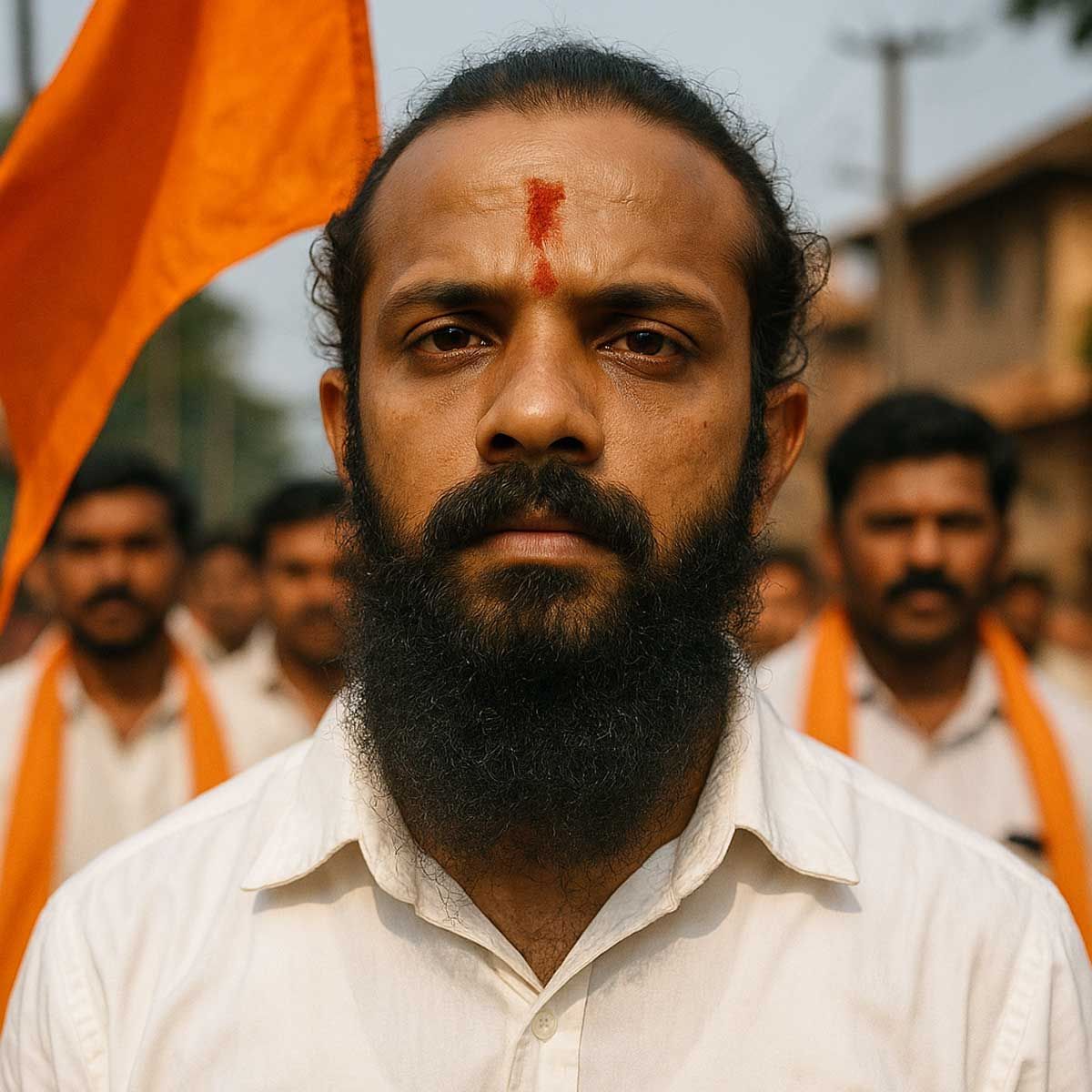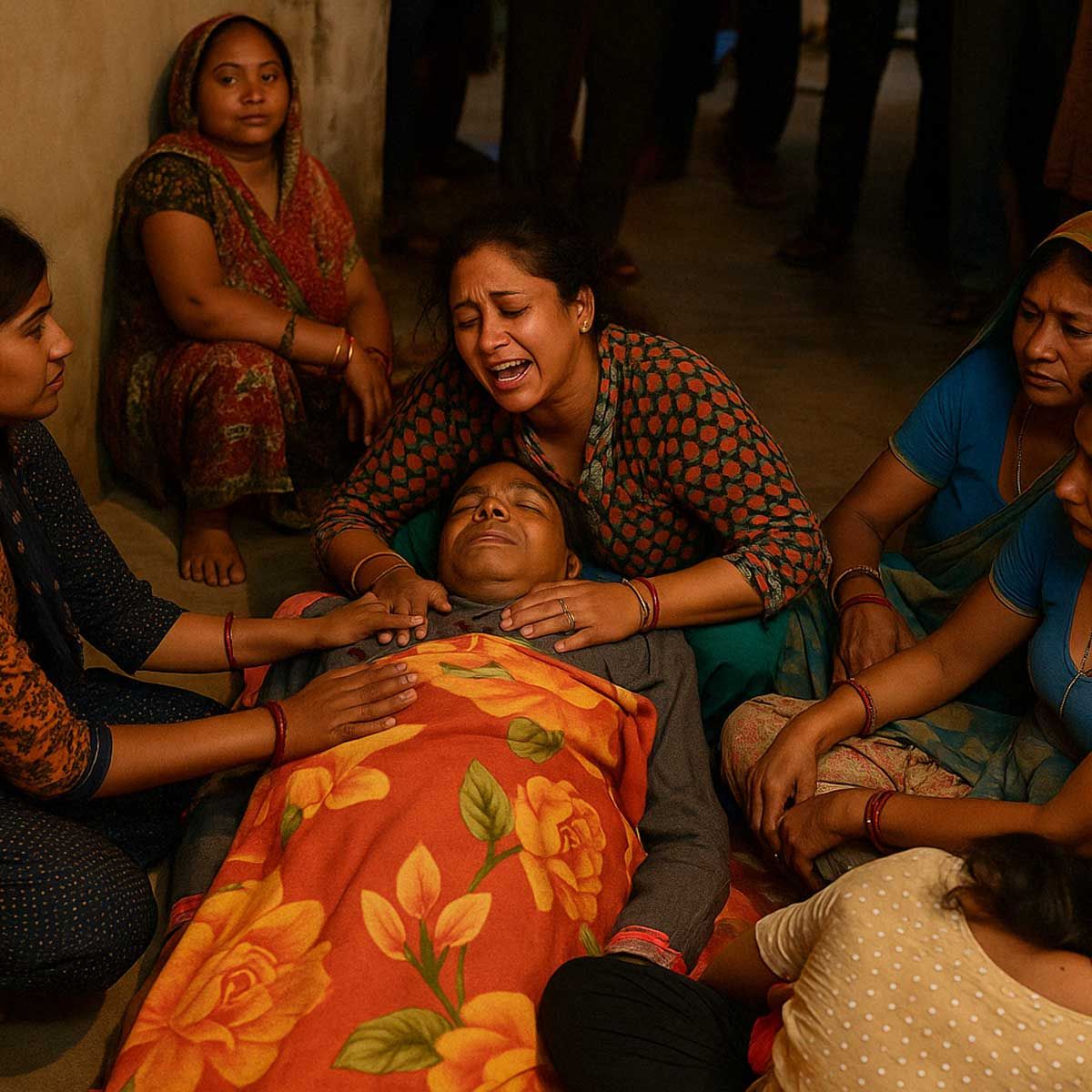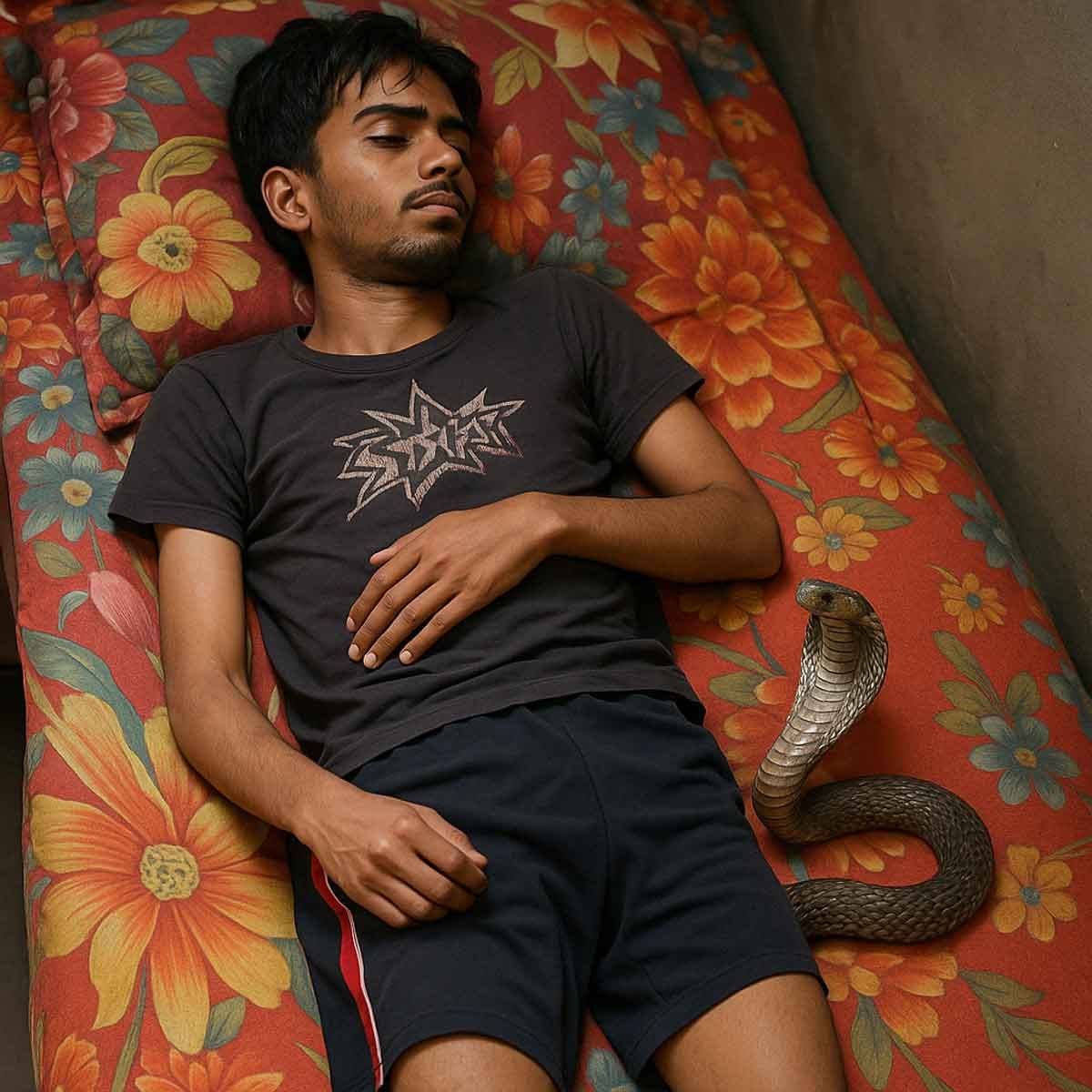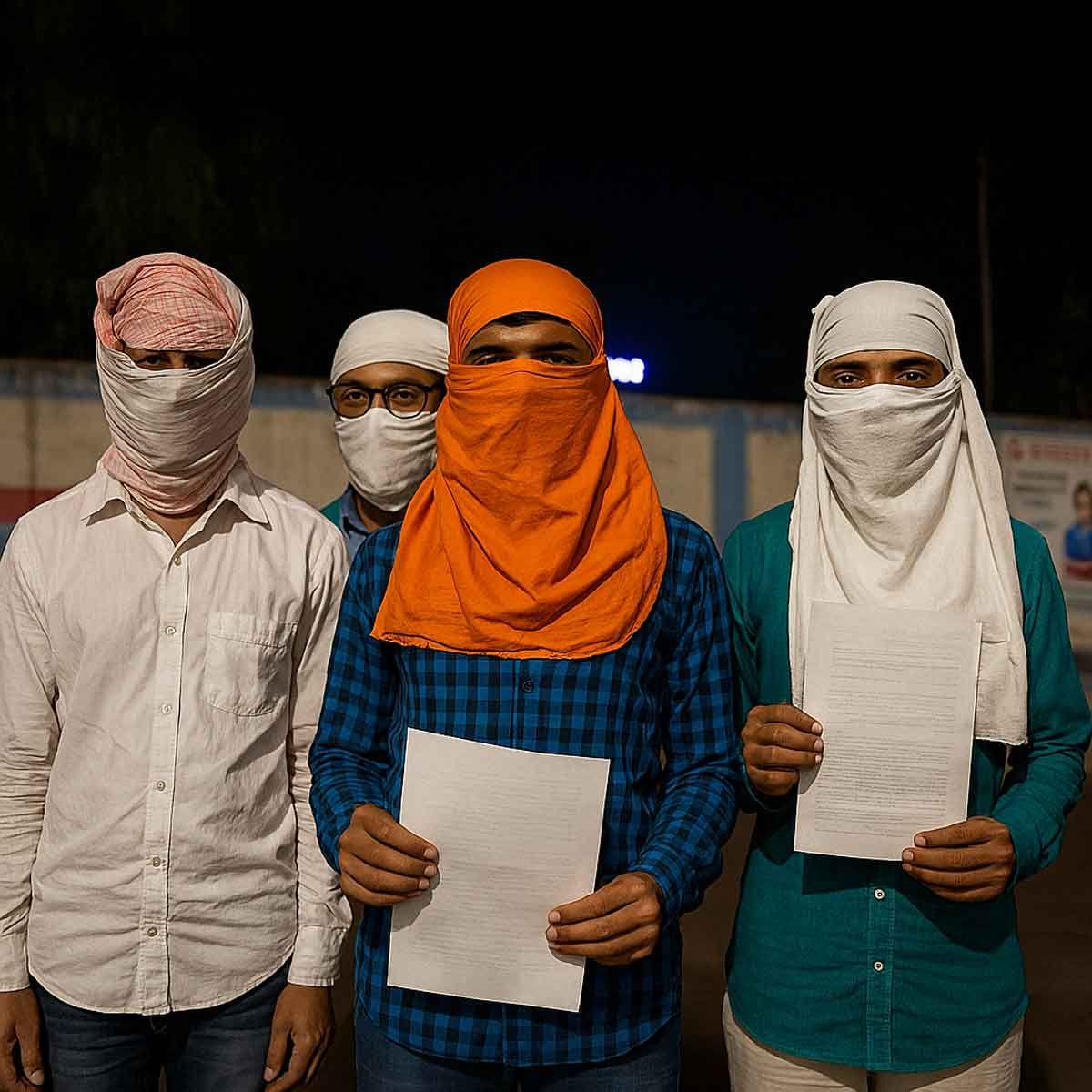More Coverage
Twitter Coverage
Satyaagrah
Written on
Satyaagrah
Written on
Satyaagrah
Written on
Satyaagrah
Written on
Satyaagrah
Written on
JOIN SATYAAGRAH SOCIAL MEDIA
"To reopen old wounds is to seek healing, not hurt": 34 years past the assassination of Judge Neelkanth Ganjoo for fulfilling his duty still echoes in Jammu and Kashmir, as the SIA reopens this chapter, we are reminded that justice always finds its way
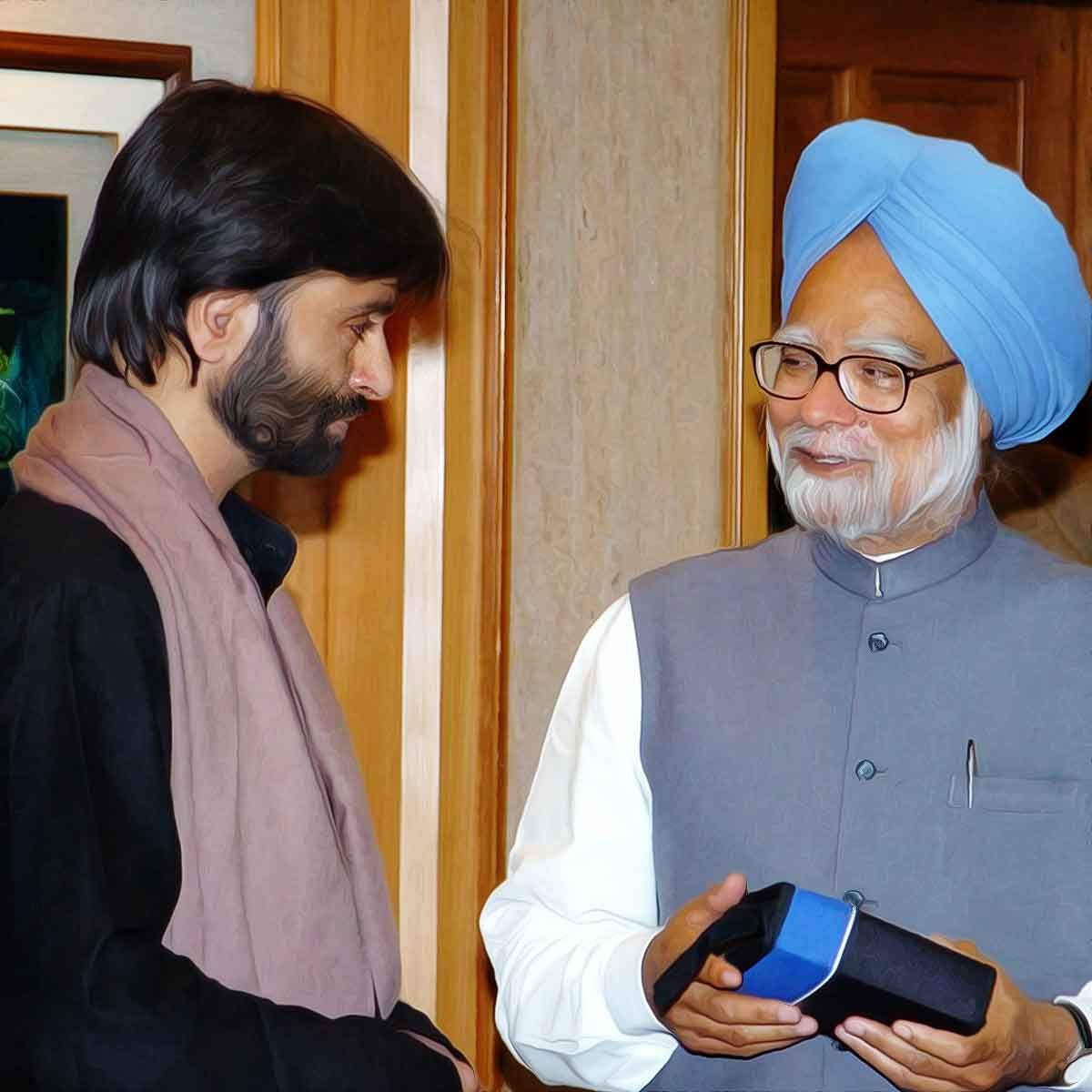
In Jammu and Kashmir, over three decades ago, the cold-blooded assassination of retired Judge Neelkanth Ganjoo sent shockwaves through the region. Today, the mystery behind the murder is once again being revisited, as the Jammu and Kashmir State Investigation Agency (SIA) decided to reopen the case that seemed closed to many. But to understand the importance of this decision, one must delve into the intricacies of this dark chapter in the region's history.
|
Neelkanth Ganjoo was no ordinary judge. Between 1966 to 1968, he found himself at the heart of a significant trial. He was the presiding judge over the trial of Maqbool Bhat, the co-founder of the Jammu Kashmir Liberation Front (JKLF). Bhat was accused and later convicted for the murder of police constable Amar Chand in 1966. Demonstrating unwavering commitment to justice, Judge Ganjoo sentenced Maqbool Bhat to death in August 1968. This sentence was upheld by the Supreme Court in 1982.
The narrative, however, took a chilling turn. After JKLF terrorists murdered diplomat Ravindra Mhatre in Britain, the Indian government decided to carry out the death sentence against Maqbool Bhat at Tihar Jail. The execution did not sit well with some, leading to a dire consequence for Judge Ganjoo. On November 4, 1989, as he went about his day in the Hari Singh Street market in Srinagar, three JKLF terrorists targeted him. He was brutally shot in broad daylight, a retaliatory act for sentencing Maqbool Bhat.
This wasn't an isolated act of violence. The period witnessed escalating tensions and violence. The murder of the BJP leader, Tika Lal Taploo, another prominent Kashmiri Pandit, soon followed Judge Ganjoo's assassination. These acts of violence significantly contributed to the already growing fears among the Kashmiri Pandits, leading to their mass exodus from the valley.
The character central to this narrative, Maqbool Bhat, was a complex figure. Born in Kupwara district in 1938, Bhat began his political journey during his college days, associating with the Plebiscite Front. Following the arrest of political figure Shiekh Abdullah in 1958, Bhat left for Pakistan, later joining Peshawar University. Over time, his ideologies morphed and intensified, leading to the formation of the National Liberation Front (NFL), which eventually became a precursor to the JKLF. Bhat's crimes ranged from kidnappings to murders, making him one of the most notorious figures in the region.
The capture of Bhat was a significant blow to the National Liberation Front (NLF) in Azad Kashmir. This arrest disrupted their operations considerably. Following this setback, Amanullah Khan shifted his base to England. There, he found significant support from the British Mirpuri community, which played a pivotal role in rejuvenating their movement. A major transformation occurred when the UK chapter of the Plebiscite Front was rebranded as the Jammu and Kashmir Liberation Front (JKLF) in May 1977. This newly branded organization then established its military division named the 'National Liberation Army.' By February of the following year, Amanullah Khan assumed the position of General Secretary of the JKLF.
|
Efforts for Bhat's Release and the Rise of JKLF | There were multiple efforts initiated by various Kashmiri factions to secure the release of Maqbool Bhat. One of the notable attempts was the hijacking of an Indian aircraft by Abdul Hameed Diwani in 1976. Another daring effort was an attempt to destroy the conference hall in Delhi during the Non-Alignment Movement meeting in 1981, although there's a need for more solid evidence to validate this claim. The desperation of these factions reached its peak in early February 1984 when the ‘National Liberation Army’ of the JKLF kidnapped Ravindra Mhatre, an Indian diplomat stationed at the Indian consulate in Birmingham. Their demands were clear: the release of Maqbool Bhat and a hefty ransom. However, in a tragic turn of events, they assassinated Mhatre merely two days post his abduction.
Following this shocking incident, the Indian authorities acted swiftly. Bhat's plea for clemency was promptly denied, leading to his execution in Tihar Jail, New Delhi, on 11 February 1984. The event was marked by heightened security measures to prevent any disturbances.
Reactions and Aftermath of Bhat's Execution | The execution of Bhat wasn't received quietly. Several newspapers reported scattered protests and manifestations of discontent, terming them as "tremors of tension." Trehgam saw a significant shutdown, with businesses closed for four continuous days. Srinagar's older parts too witnessed eerily empty streets, even in the absence of any official shutdown call. The authorities, in anticipation of such unrest, had already detained approximately 1,000 members of the opposition.
In the shadow of Bhat's execution, the JKLF's determination intensified. Half a decade later, they initiated a militant campaign advocating the detachment of the Union Territory of Jammu & Kashmir from India. Bhat's death became a rallying cry for the JKLF, who have since demanded that his remains, interred within Tihar Jail, be returned to them. Separatist leaders have consistently called for annual shutdowns in the Valley to commemorate the day of his death. By 1994, however, the JKLF declared a ceasefire.
Another significant event post Bhat’s demise was the assassination of Judge Neelkanth Ganjoo on 4 November 1989. He had been the presiding judge over the Amar Chand murder trial, where he had pronounced the death sentence on Maqbool Bhat. This act further highlighted the tensions and consequences surrounding Bhat's legacy.
|
So, why has the SIA decided to reopen this case after so many years?
Firstly, while the assassination's main culprits are known, there might be more to the story. Delving deeper into the case could reveal hidden connections or motives that were previously overlooked. By reopening the case, the SIA aims to unearth any larger criminal conspiracies lurking in the shadows.
Secondly, while decades have passed, the memories and traumas of that time are still fresh for many, particularly the Kashmiri Pandit community. The move to reopen the case serves as a beacon of hope for them. They believe that justice might have been delayed but should never be denied.
Lastly, this decision sends a strong message. It signifies that no crime, regardless of how old, will be forgotten. This move stands as a testament to the commitment to uphold law and order and ensure that acts of terror will be thoroughly investigated.
The SIA's proactive step to involve the public in this investigation marks an inclusive approach to justice. By providing avenues like email and phone numbers for information and ensuring confidentiality, the agency is fostering a spirit of collective justice.
In conclusion, the reopening of Judge Neelkanth Ganjoo's murder case may appear to some as a mere revisiting of the past, but its implications are far-reaching. It underscores the unwavering pursuit of truth and justice, reminding us that in the face of adversity, the quest for justice should never wane.
|
SIA Appeal for help
In an important step towards justice, the State Investigation Agency (SIA) has made a public plea. They have reached out to everyone who might have some knowledge or understanding about the circumstances surrounding the murder of Justice Neelkanth Ganjoo. They are urging people to come forward with any information, whether it directly relates to the case or even if it's indirectly related, as it could be vital in helping to investigate the matter further.
To provide some background, Justice Neelkanth Ganjoo tragically lost his life back in 1989. The culprits behind his murder were the JKLF terrorists led by Yasin Malik. But why was Justice Ganjoo targeted? In a previous case, he had sentenced a JKLF terrorist named Maqbool Butt. Following the sentencing, Maqbool Butt was executed by India. This decision came after an incident in the United Kingdom where an Indian Diplomat named Ravindra Mahtre was killed. The execution of Butt was in direct response to that tragic event.
The SIA's public outreach has an additional layer of assurance for potential informants. The agency understands the sensitive nature of the case and the potential risks for those coming forward. As a result, the SIA has ensured that the identity of anyone who provides information will be kept strictly confidential. This is an effort to ensure that individuals feel safe and secure when sharing what they know.
Moreover, the SIA isn't just asking for help without offering something in return. Recognizing the value of actionable intelligence, the agency has declared that they will reward useful and relevant information. This initiative further showcases their commitment to solving this case and bringing justice to those affected.
For those who might have information, or even a hint or a clue, the SIA has provided ways to reach out. The public can either call on the phone number 8899004976 or send an email to This email address is being protected from spambots. You need JavaScript enabled to view it.. It's an effort to create multiple avenues for people to communicate what they know about the tragic murder of Justice Neelkanth Ganjoo.
In conclusion, this case, which has remained unresolved for over three decades, is getting renewed attention from the authorities. The SIA's appeal to the public demonstrates a strong commitment to ensuring justice is served. It's a reminder that even after so much time has passed, the quest for truth and justice remains paramount.
 Support Us
Support Us
Satyagraha was born from the heart of our land, with an undying aim to unveil the true essence of Bharat. It seeks to illuminate the hidden tales of our valiant freedom fighters and the rich chronicles that haven't yet sung their complete melody in the mainstream.
While platforms like NDTV and 'The Wire' effortlessly garner funds under the banner of safeguarding democracy, we at Satyagraha walk a different path. Our strength and resonance come from you. In this journey to weave a stronger Bharat, every little contribution amplifies our voice. Let's come together, contribute as you can, and champion the true spirit of our nation.
 |  |  |
| ICICI Bank of Satyaagrah | Razorpay Bank of Satyaagrah | PayPal Bank of Satyaagrah - For International Payments |
If all above doesn't work, then try the LINK below:
Please share the article on other platforms
DISCLAIMER: The author is solely responsible for the views expressed in this article. The author carries the responsibility for citing and/or licensing of images utilized within the text. The website also frequently uses non-commercial images for representational purposes only in line with the article. We are not responsible for the authenticity of such images. If some images have a copyright issue, we request the person/entity to contact us at This email address is being protected from spambots. You need JavaScript enabled to view it. and we will take the necessary actions to resolve the issue.
Related Articles
- In another shocker, Supreme Court quotes 'every sinner has a future' and commutes death sentence of Mohd Firoz for rape & murder of 4-year-old girl: Child brutally assaulted, two teeth broken while smothering after rape
- Since the abrogation of article 370, nearly 1700 Kashmiri Pandits are appointed by the Jammu and Kashmir government in various departments: Centre in Rajya Sabha
- "A people that values its privileges above its principles soon loses both": Delhi High Court upheld the freedom of speech privilege of the advocacy profession, Justice Mini Pushkarna even refused to look into irrelevance or maliciousness of the statement
- "It is only the cynicism that is born of success that is penetrating and valid": A five-judge bench of the Supreme Court on Monday dismissed a petitions challenging the Central government's 2016 decision to demonetise currency notes of ₹1,000 and ₹500
- "Access is vital in lobbying. If you can't get in your door, you can't make your case": CJI Chandrachud removed justice MR Shah from the bench hearing forced conversion for not succumbing to lobby's pressure, was scheduled for Feb, now listed on Jan 16
- Two Lashkar-e-Taiba terrorists sent to '72 hoors' in an encounter in Jammu & Kashmir: Jan Mohd Lone who killed bank manager Vijay Kumar eliminated by security forces, killer of school teacher Rajni Bala trapped by security forces
- Mentally-challenged Tamil Hindu man executed for a drug offense by Singapore whereas India's Supreme Court shockingly commutes death sentence of child rapist and murderer Mohd Firoz
- In a case regarding child custody of 11-year-old Kanak, Court orders minor girl to be sent to Nari Niketan: Rajasthan
- Minimum age of women for marriage is raised to 21 years: Union Cabinet clears proposal
- "Can omnibus orders be passed against demolitions": Supreme Court asks in Jamiat pleas challenging "Bulldozer" actions against anti-social elements in Uttar Pradesh and other states, refuses to pass interim orders, next hearing on Aug 10
- Why Hindus not claiming their temples back from the Government control: Is pro-Hindu govt will always be in power
- Gruesome murder case of RSS leader SK Sreenivasan in Kerala: all 20 accused are linked to extremist Islamic organisation PFI or SDPI, assailants hacked him to death in Palakkad with sharp weapons
- "Justice for sale, affordability varies": In an escalating controversy, Udhayanidhi Stalin's fierce criticisms of Sanatana Dharma lead to public uproar & legal petitions, Supreme Court denies expedited hearing, ‘Won’t allow it, follow standard procedures’
- In a court case involving rioting, arson, and vandalism during Patidar quota agitation, Gujarat Congress’ president Hardik Patel gets a stay from Supreme Court so he can contest elections: Patel was sentenced to two years in jail
- "As dreams meet destiny, the world watches with bated breath": Srinagar beams under the global spotlight as the enchanting Kashmir readies for Miss World 2023, 'Mind-blowing' echoes Karolina Bielawska, encapsulating the valley's mesmerizing allure
















